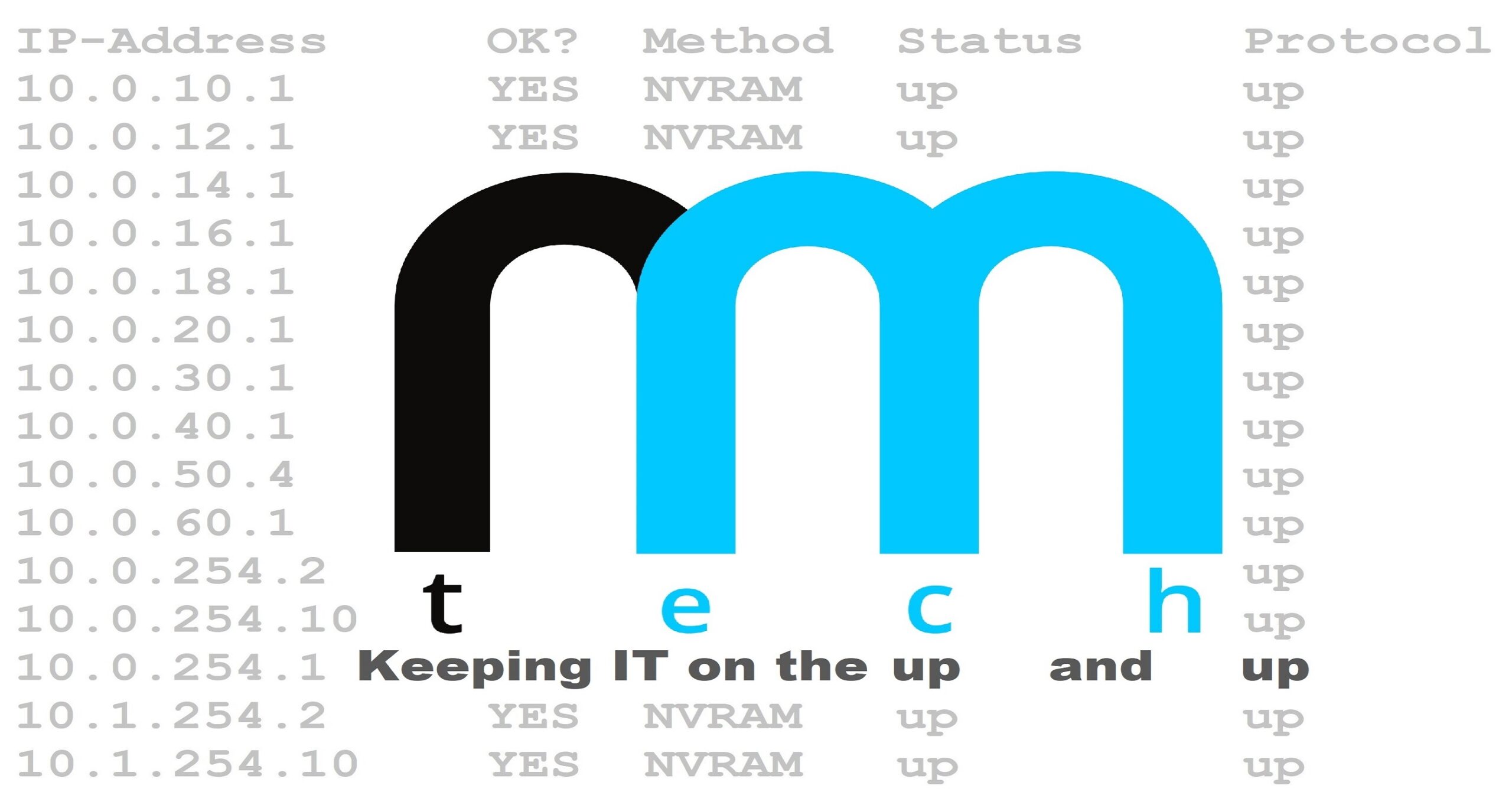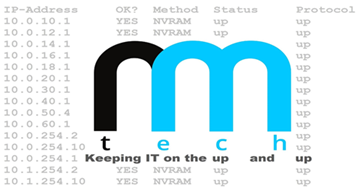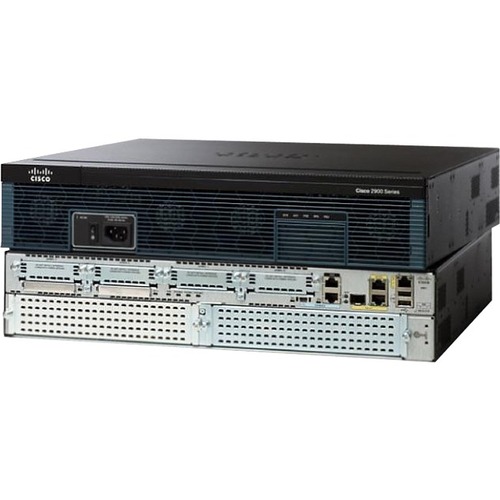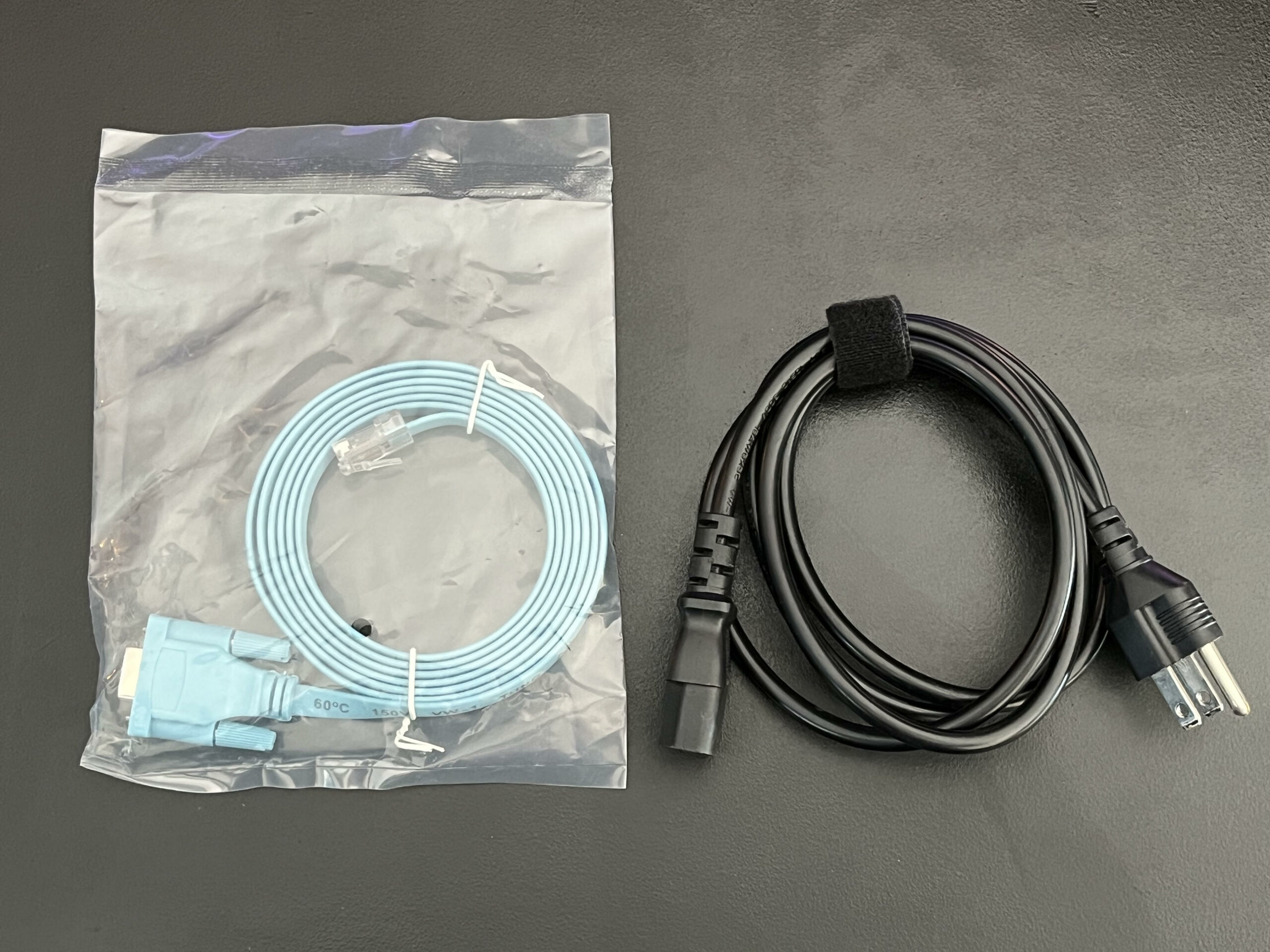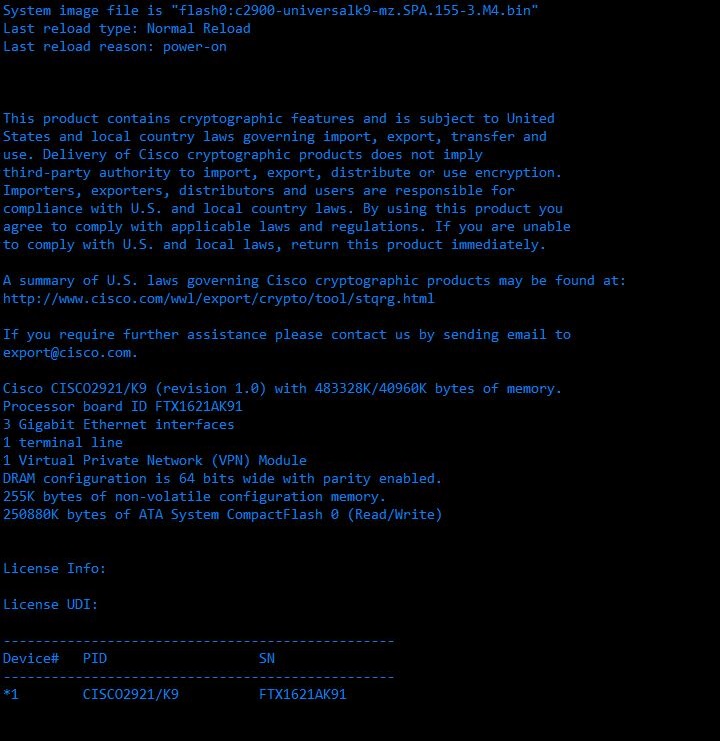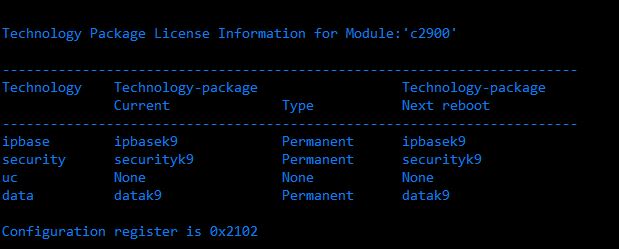Cisco 2921 Gigabit ISR Router
$250.00
This is a used product which has been thoroughly tested and verified to be in 100% working condition.
License(s): ipbasek9, securityk9, and datak9
IOS Image: c2900-universalk9-mz.SPA.155-3.M4.bin
Rackmount ears are included, as well as a power cable and serial console cable.
1 in stock
Description
Key Business Benefits
The Integrated Services Routers Generation 2 (ISR G2) provide superior services integration and agility. Designed for scalability, the modular architecture of these platforms enables you to grow and adapt with your business needs. Table 1 lists the business benefits of the Cisco 2900 Series.
Table 1. Key Business Benefits of the Cisco 2900 Series Integrated Services Routers
|
Benefits |
Description |
|
Services Integration |
● The Cisco 2900 Series ISRs offer increased levels of services integration with voice, video, security, wireless, mobility, and data services, enabling greater efficiencies and cost savings.
|
|
Services On Demand |
● A single Cisco IOS® Software Universal image is installed on each ISR G2. The Universal image containsall of the Cisco IOS technology sets which can be activated with a software license. This allows your business to quickly deploy advanced features without downloading a new IOS image. Additionally, larger default memory is included to support the new capabilities.
● The Cisco Services Ready Engine (SRE) enables a new operational model which allows you to reduce capital expenditures (CapEx) and deploy a variety of application services as needed on a single integrated compute services module.
|
|
High Performance with Integrated Services |
● The Cisco 2900 Series enables deployment in high speed WAN environments with concurrent services enabled up to 75 Mbps.
● A MultigiGabit Fabric (MGF) enables high-bandwidth module-to-module communication without compromising routing performance.
|
|
Network Agility |
● Designed to address customer business requirements, the Cisco 2900 Series modular architecture offers increased capacity and performance as your network needs grow.
● Modular interfaces offer increased bandwidth, a diversity of connection options, and network resiliency.
|
|
Energy Efficiency |
● The Cisco 2900 Series architecture provides energy-saving features that include the following:
◦ The Cisco 2900 Series offers intelligent power management and allows the customer to control power to the modules based on the time of day. Cisco EnergyWise technology will be supported in the future.
◦ Services integration and modularity on a single platform performing multiple functions, optimizes raw materials consumption and energy usage.
◦ Platform flexibility and ongoing development of both hardware and software capabilities lead to a longer product lifecycle, lowering all aspects of the total cost of ownership, including materials and energy use.
◦ High efficiency power supplies are provided with each platform.
|
|
Investment Protection |
● The Cisco 2900 Series maximizes investment protection:
◦ Reuse of a broad array of existing modules supported on the original Integrated Services Routers provides a lower cost of ownership.
◦ A rich set of Cisco IOS Software features carried forward from the original Integrated Services Routers and delivered in a single universal image.
◦ Flexibility to adapt as your business needs evolve.
|
Platform Architecture and Modularity
The Cisco 2900 Series is architected to meet the application demands of today’s branch offices with design flexibility for future applications. The modular architecture is designed to support increasing bandwidth requirements, Time-Division Multiplexing (TDM) interconnections, and fully integrated power distribution to modules supporting 802.3af Power over Ethernet (PoE) and Cisco Enhanced PoE (ePoE). Table 2 lists the architectural features and benefits of the Cisco 2900 Series.
Table 2. Architectural Features and Benefits
|
Architectural Feature |
Benefits |
|
Modular Platform |
● The Cisco 2900 Series ISRs are highly modular platforms with several types of module slots to add connectivity and services for varied branch-office network requirements.
● The ISRs offer an industry-leading breadth of LAN and WAN connectivity options through modules to accommodate field upgrades for future technologies without requiring a platform replacement.
|
|
Processors |
● The Cisco 2900 Series are powered by high-performance multi-core processors that can support the growing demands of high-speed WAN connections to the branch-office while also running multiple concurrent services.
|
|
Embedded IP Security (IPSec) VPN Hardware Acceleration |
● Embedded hardware encryption acceleration is enhanced to provide higher scalability, which combined with an optional Cisco IOS Security license, enables WAN link security and VPN services (IPSec acceleration).
● The onboard encryption hardware replaces and outperforms the Advanced Integration Modules (AIMs) of previous generations.
|
|
Multigigabit Fabric (MGF) |
● The Cisco 2900 Series introduces an innovative Multi Gigabit Fabric (MGF) that allows for efficient module-to-module communication, enabling tighter services interactions across modules while reducing the overhead on the route processor.
|
|
TDM Interconnectivity Fabric |
● Unified communications services in the branch office are significantly enhanced with the use of a TDM interconnectivity fabric in the system architecture, allowing for scaling of DS-0 channel capacity.
|
|
Integrated Gigabit Ethernet Ports |
● All onboard WAN ports are 10/100/1000 Gigabit Ethernet WAN routed ports.
● One of the three 10/100/1000 Ethernet WAN ports on the Cisco 2921 and 2951 supports Small Form-Factor Pluggable (SFP)-based connectivity in lieu of a RJ-45 port and enabling fiber connectivity.
|
|
Innovative Universal-Serial-Bus (USB)-Based Console Access |
● A new, innovative USB console port offers management connectivity for devices without a serial port such as modern laptop computers.
● Traditional console and auxiliary ports are also available.
|
|
Optional Integrated Power Supply for Distribution of PoE and Universal DC Power Supply |
● An optional upgrade to the internal power supply provides inline power (802.3af-compliant PoE and Cisco Inline Power) to integrated switch modules.
● On the Cisco 2911, 2921, and 2951, an optional DC power supply is available that extends deployment into central offices and industrial environments.
● On the Cisco 2911, an optional DC-PoE power supply is available.
|
|
Optional External Redundant Power Supply (RPS) |
● The Cisco 2911, 2921, and 2951 allow for power redundancy through the use of an external RPS device, thereby decreasing network downtime and protecting the network from power-supply failures.
● Redundant power on the Cisco 2900 Series is supported through the Cisco RPS 2300 Redundant Power System. You can use the Cisco RPS 2300 to provide redundant power for Cisco 2900 Series ISRs as well as Cisco Catalyst® switches.
● In order to use the Cisco RPS 2300, an external RPS adapter is required (configurable option) to connect the platform to the external RPS.
|
|
PoE Boost |
● When connected to an external RPS device, the Cisco 2911, 2921, and 2951 can operate in a PoE boost configuration in lieu of redundant power mode – whereby the power capacity of the platform is increased to twice the normal level to power additional PoE ports.
|
|
Designed for Flexible Deployments |
● The Cisco 2911 and 2951 are designed for NEBS environments.
● The 2911 is 12” deep and has an optional fan filter for deployments in a variety of environments. An assembly that provides front-to-back airflow is also available for 23” racks.
|
Modularity Features and Benefits
The Cisco 2900 Series provides significantly enhanced modular capabilities (refer to Table 3) offering investment protection for customers. Most of the modules available on previous generations of Cisco routers, such as the Cisco 2800 Series, are supported on the Cisco 2900 Series. Additionally, modules can be used on other supported Cisco platforms to provide maximum investment protection. Taking advantage of common interface cards across a network greatly reduces the complexity of managing inventory requirements, implementing large network rollouts, and maintaining configurations across a variety of branch-office sizes.
A complete list of supported modules, including a list of supported SFPs for the Cisco 2900 Series, is available at: https://www.cisco.com/go/2900.
Table 3. Modularity Features and Benefits
|
ISR Modules |
Benefits |
|
Cisco Service Module |
● Each service module slot offers high-data-throughput capability:
◦ Up to 4 Gbps aggregate toward the route processor.
◦ Up to 2 Gbps aggregate to other module slots over MGF.
● Service Module (SM) slots are highly flexible with support for double-wide service modules (SM-Ds), which are Service Modules that require two SM slots. SM-Ds in the Cisco 2921 and 2951 provide flexibility for higher-density modules.
● A service module slot replaces the network module and the extension module for voice/fax (EVM) slots and is offered on Cisco 2911, 2921, and 2951 ISRs.
● An adapter module enables backward compatibility with existing network modules, enhanced Network Modules (NMEs), and EVMs.
● Service module slots provide twice the power capabilities relative to the network-module slots, allowing for flexibility for higher-scale and better-performance modules.
● Power to service module slots can be managed by extensions similar to the Cisco EnergyWise framework, so your organization can reduce energy consumption in your network infrastructure. Full EnergyWise support will be available in future software releases.
|
|
Cisco Enhanced High-Speed WAN Interface Card (EHWIC) |
● The EHWIC slot provides enhancements to the prior generation’s high-speed WAN interface card (HWIC) slots while provide maximum investment protection by natively supporting HWICs, WAN Interface Cards (WICs), Voice Interface Cards (VICs), and Voice/WAN interface cards (VWICs).
● Four integrated EHWIC slots on the Cisco 2901, 2911, 2921, and 2951 allow for more flexible configurations.
● Each HWIC slot offers high-data-throughput capability:
◦ Up to 1.6 Gbps aggregate toward the route processor.
◦ Up to 2 Gbps aggregate to other module slots over the MGF.
● Flexibility to support double-wide modules is enabled by combining two EHWIC slots. Up to 2 doublewide HWIC (HWIC-D) modules are supported.
|
|
Cisco Internal Services Module (ISM) |
● A single ISM slot provides flexibility to integrate intelligent service modules on an internal slot within the chassis
● Each ISM slot offers high-data-throughput capability:
◦ Up to 4 Gbps aggregate toward the route processor.
◦ Up to 2 Gbps aggregate to other module slots over the MGF.
● The ISM replaces the AIM slot; existing AIM modules are not supported in the ISM slot.
● Power to ISM slots can be managed by extensions similar to the Cisco EnergyWise framework, so your organization can reduce energy consumption in your network infrastructure. Full EnergyWise support will be available in future software releases.
|
|
Cisco High-Density Packet Voice Digital Signal Processor (DSP) Module (PVDM3) Slots on Motherboard |
● PVDM3 slots natively support PVDM3 modules, providing support for richer density for rich-media voice and video.
● Each PVDM3 slot connects back to the system architecture through a 2 Gbps aggregate link through the MGF.
● Investment protection for PVDM2 modules is supported through an adapter module.
● Power to the PVDM slots can be managed by extensions similar to the Cisco EnergyWise framework, so your organization can reduce energy consumption in your network infrastructure. Full EnergyWise support will be available in future software releases.
|
|
Compact Flash Slots |
● Two external Compact Flash slots are available on the Cisco 2900 Series Integrated Services Routers. Each slot can support high-speed storage densities upgradeable to 4 GB in density.
|
|
USB 2.0 Ports |
● Two high-speed USB 2.0 ports are supported. The USB ports enable secure token capabilities and storage.
|
